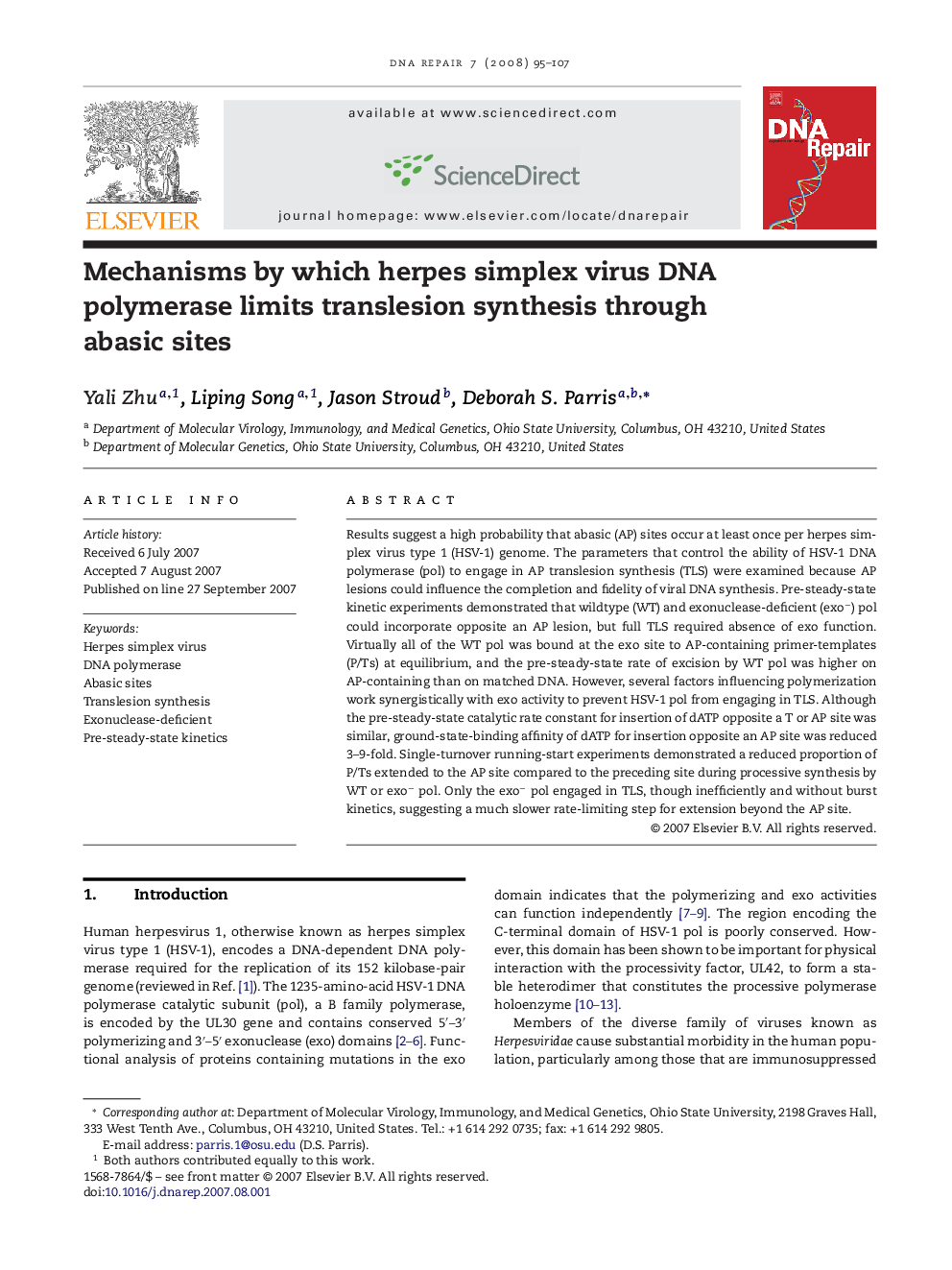| Article ID | Journal | Published Year | Pages | File Type |
|---|---|---|---|---|
| 1981294 | DNA Repair | 2008 | 13 Pages |
Results suggest a high probability that abasic (AP) sites occur at least once per herpes simplex virus type 1 (HSV-1) genome. The parameters that control the ability of HSV-1 DNA polymerase (pol) to engage in AP translesion synthesis (TLS) were examined because AP lesions could influence the completion and fidelity of viral DNA synthesis. Pre-steady-state kinetic experiments demonstrated that wildtype (WT) and exonuclease-deficient (exo−) pol could incorporate opposite an AP lesion, but full TLS required absence of exo function. Virtually all of the WT pol was bound at the exo site to AP-containing primer-templates (P/Ts) at equilibrium, and the pre-steady-state rate of excision by WT pol was higher on AP-containing than on matched DNA. However, several factors influencing polymerization work synergistically with exo activity to prevent HSV-1 pol from engaging in TLS. Although the pre-steady-state catalytic rate constant for insertion of dATP opposite a T or AP site was similar, ground-state-binding affinity of dATP for insertion opposite an AP site was reduced 3–9-fold. Single-turnover running-start experiments demonstrated a reduced proportion of P/Ts extended to the AP site compared to the preceding site during processive synthesis by WT or exo− pol. Only the exo− pol engaged in TLS, though inefficiently and without burst kinetics, suggesting a much slower rate-limiting step for extension beyond the AP site.
